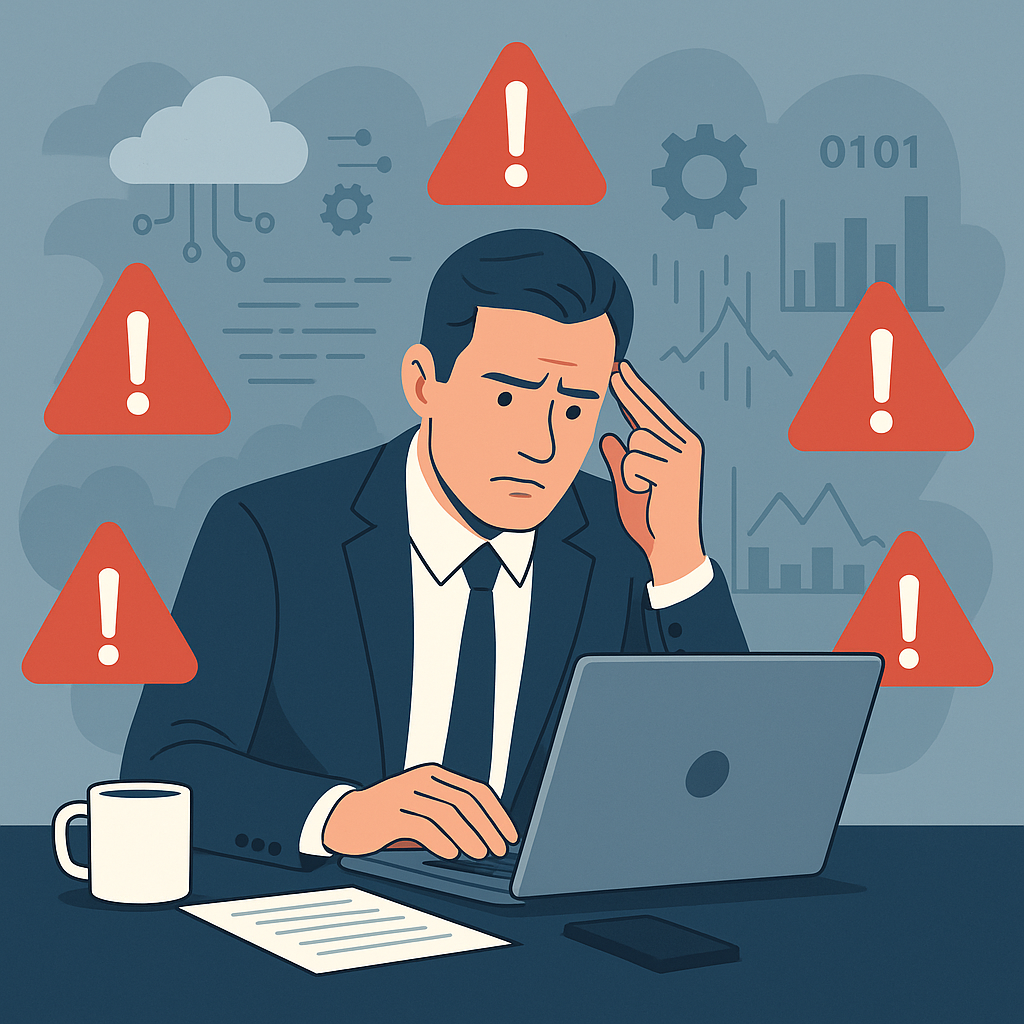When you’re in business, particularly in the technology sector, performance, downtime, and security are more than just technical jargon—they directly impact your bottom line. These issues are often thought to only concern your IT staff or coders, but from business perspective, they should be of concern to you as well. You might not need to know how to fix server issues or detect a cyber attack, but understanding how these elements impact your business is a must.
Performance: Why It Matters to Your Business
Performance refers to how well your software or systems work under normal conditions. Think of it like the engine of a car: if the engine is running smoothly, everything else seems to work fine. But when it’s sluggish or inefficient, even the best-looking car will disappoint.
For companies, speed or responsiveness is not just about performance—it’s about the user experience. When people are consuming your product and they have to wait for pages to load, or if it freezes, they’re going to be frustrated and abandon it. Meanwhile, a fast, fluid experience keeps users engaged and more likely to return.
Poor performance can cost you money, too. Slow loading times on an online store, for instance, can have a direct effect on sales. If your product is not selling well, there’s a higher risk of losing customers and hurting your brand’s reputation. This is why high-performance assurance is an investment in customer satisfaction and retention.
As an entrepreneur, it’s valuable to know how performance can impact top business metrics such as conversion rates, customer satisfaction, and even employee productivity. Ask your technology team: “How do we make sure this product or service is performing optimally?” and “What is the impact of a decline in performance on our users and brand?”
Downtime: The Hidden Cost to Your Business
Downtime is when your system, site, or software isn’t accessible. It’s as if the lights have gone out in a shop—everything comes to a halt. Whether it’s scheduled maintenance or a system breakdown, downtime has an effect on operations, and that effect can be widespread.
For companies that have online services or digital applications, even a few minutes of downtime can be a problem in real terms. For example, if your store goes down during a high-traffic holiday season, you could lose out on tens of thousands of dollars worth of sales. Downtime doesn’t only hurt your wallet, however. It hurts customer trust too. If users constantly see outages, they may leave. If staff are dependent on internal tools and they are not accessible, it makes it harder to do work.
Consider downtime to be an affect. The longer the downtime, the worse the impact. Although all downtime is impossible to prevent, minimal downtime should be an objective. You don’t need to be technical to realize the importance of uptime—time is money.
Ensure you get at least these tough questions posed to your tech team: “How frequently do we have downtime, and why do we have it?” and “How do we prevent surprise outages?” Understanding answers to these can provide you with a better idea of what costs you may incur for downtime and how to reduce it.
Security: Not Just a Technical Issue
Security is one of the things that tends to get put on the back burner until it’s too late. A security breach may seem like the problem of the IT department, but it impacts your whole business. An insecure system can ruin your reputation, cause you legal hassles, and cost you a great deal of money.
For instance, if customer information is breached because of a cyber attack, it not only damages trust, but you might also have lawsuits or regulatory penalties on your hands. For companies that handle sensitive information, such as banks or medical providers, security is a do-or-die matter. But even for firms that don’t handle sensitive data, a breach will cost you brand reputation and customer loyalty.
Security is more than just installing firewalls or encryption—it’s a mindset. It’s constant updates, risk audits, and a vigilant culture. As a leader, it’s your responsibility to ensure your team is equipped with the appropriate tools and processes. Security doesn’t guard your tech infrastructure; it guards your brand.
Ask your tech team: “What are we doing to stay ahead of potential security threats?” and “How do we respond when something goes wrong?” These questions aren’t just about technical defenses—they’re about protecting your business from damage that could affect your customers, employees, and reputation.
Understanding the Relationship Between These Elements
Although performance, downtime, and security appear to be distinct issues, they’re all related. Inadequate performance creates the potential for security risks—if your system is slow and not well-maintained, intruders will be able to find vulnerabilities. Conversely, a security incident can create downtime as systems are taken offline for repair or investigation.
A failure in one will oftentimes create problems in the others. If performance of your system declines, downtime may ensue, which could in turn unveil vulnerabilities that present new security threats. Because of this, you need to know how these areas intersect and interact with each other. You don’t need to be a guru, but understanding how a failure of your system or a security incident can cause a chain reaction is essential.
How Do Business Leaders Address These Challenges?
Prioritize Tech in Strategy: Technology is not just something that occurs in the back office. It’s at the core of your business operations, so include it in your overall business strategy. Get a grasp on how performance, downtime, and security contribute to the larger picture and prioritize them in your decision-making.
Don’t Skip the Fundamentals: Good performance, reduced downtime, and protection of your systems all depend on solid fundamental practices. Don’t skimp on these things. This might involve spending money on the proper tools, hiring well-trained employees, or taking time for routine maintenance.
Plan for Downtime: Downtime will occur—whether you schedule it or it’s an unforeseen problem. Ensure that you have some plan to limit the damage. That may involve employing standby systems, giving customers advance warning, or compensating them if the outage is widespread. A careful response plan is vital to safeguard your reputation and maintain customer satisfaction.
Stay Ahead on Security: Cyber threats are constantly evolving. What was effective last year might not cut it this year. Stay ahead of the game with ongoing security audits and training for your staff. Ensure that your security is current and that it meets the particular requirements of your company. Security is not only about guarding information—it is about guarding your entire business ecosystem.
Focus on Monitoring and Reporting: Monitor performance metrics, downtime logs, and security alerts in close detail. The more you know, the better your decisions will be. Leverage this data to see what works and detect possible problems before they become major issues.
Wrapping It Up
Though performance, downtime, and security may appear to be matters of technicality, they are closely related to the health and prosperity of your company. As a leader, it’s worth knowing how these factors affect everything from client satisfaction to the bottom line. By posing the right questions and making well-informed decisions, you can establish an environment where technology is a sturdy base for growth, not a cause for concern.
Keep in mind, you do not have to know all of the technicalities, but you do have to know how these elements influence your business and how to control them. Be aware, be on guard, and always make these central topics your main concern so your business continues to function efficiently and securely.



